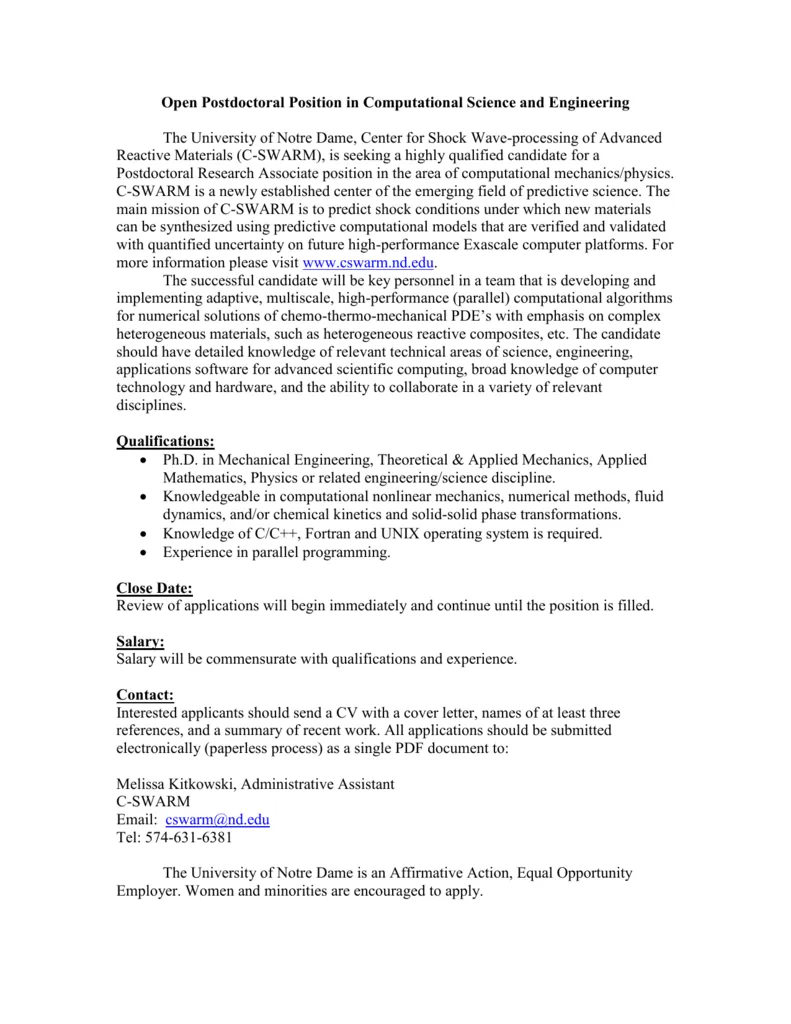Understanding the Postdoc Cover Letter Importance
Applying for a postdoctoral position is a significant step in your academic career, and your cover letter is your first impression. It’s more than just a formality; it’s your opportunity to introduce yourself, highlight your qualifications, and demonstrate your suitability for the role. A well-crafted cover letter can significantly increase your chances of getting an interview, while a poorly written one can lead to immediate rejection. This guide will explore the essential elements of a compelling cover letter, ensuring you make a strong and lasting impression on potential employers. Understanding the importance of a cover letter is the first step towards crafting a successful application that lands you the postdoc position you desire. Remember, it sets the stage for the rest of your application and gives the reader a snapshot of who you are and what you bring to the table.
What is a Postdoc Cover Letter
A postdoc cover letter is a formal document accompanying your curriculum vitae (CV) when applying for a postdoctoral research position. Its primary purpose is to introduce you to the hiring committee, highlight your relevant skills and experiences, and express your interest in the specific position and research group. Unlike your CV, which provides a comprehensive overview of your academic and professional history, the cover letter allows you to elaborate on your qualifications, explain your motivations, and tailor your application to the specific requirements of the position. It is a personalized document that showcases your personality, communication skills, and your understanding of the research area and the lab’s work. It is an opportunity to communicate your enthusiasm and connect with the reader on a more personal level, setting the stage for a possible interview.
Why a Strong Cover Letter Matters
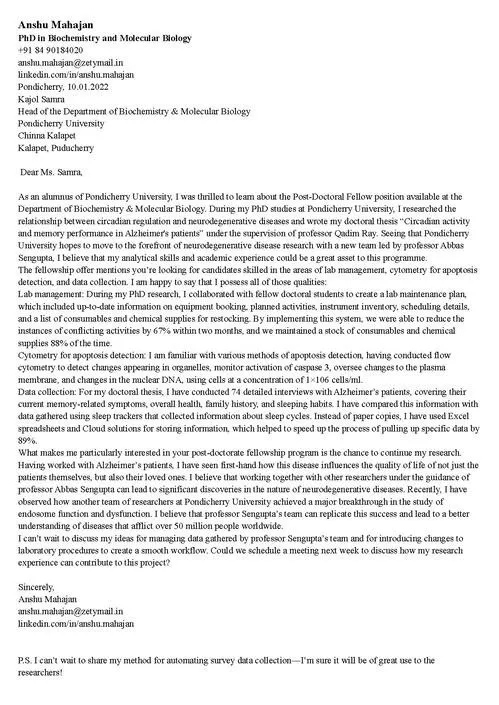
In a competitive academic landscape, a strong cover letter can be the deciding factor between you and other qualified candidates. It allows you to articulate your unique value proposition, showcasing how your skills, experience, and research interests align with the specific needs of the position and the research group. It provides an opportunity to demonstrate your communication skills, your understanding of the research area, and your ability to articulate your motivations. A well-written cover letter can capture the reader’s attention, highlight your key accomplishments, and persuade them to invite you for an interview. It is your chance to make a compelling case for why you are the ideal candidate, making a positive impression and setting you apart from the competition. The cover letter also demonstrates your attention to detail, organizational skills, and your ability to tailor your application to the specific requirements of the position.
Key Components of a Winning Cover Letter
A winning cover letter is a well-structured document that includes several key components. These include your contact information and a formal greeting, a concise and engaging introduction that states your purpose, a section highlighting your research experience and relevant skills, an explanation of how your skills match the position’s requirements, a statement of your interest and motivation for the position, and a tailored conclusion. Each of these elements is vital in creating a compelling narrative that captivates the reader and effectively conveys your qualifications. By thoughtfully addressing these components, you can create a cover letter that not only informs the hiring committee but also persuades them of your suitability for the position. Remember, the goal is to present yourself as the best possible candidate and to make a strong first impression. Every element should work together to achieve this goal.
Contact Information and Greeting
Begin your cover letter with your contact information, including your name, address, phone number, and email address. This allows the reader to easily reach you. Following this, address the letter formally to the hiring committee or, ideally, to the specific principal investigator (PI) if known. Research the lab’s website or the job posting to find the PI’s name and use it. If you can’t find the name, use a formal greeting like “Dear Hiring Committee” or “Dear Professor [Last Name].” Always ensure your greeting is accurate and professional. This initial section sets the tone for the rest of your letter and demonstrates your attention to detail and respect for the recipient. It’s a small but essential step in creating a positive first impression.
Highlighting Your Research Experience
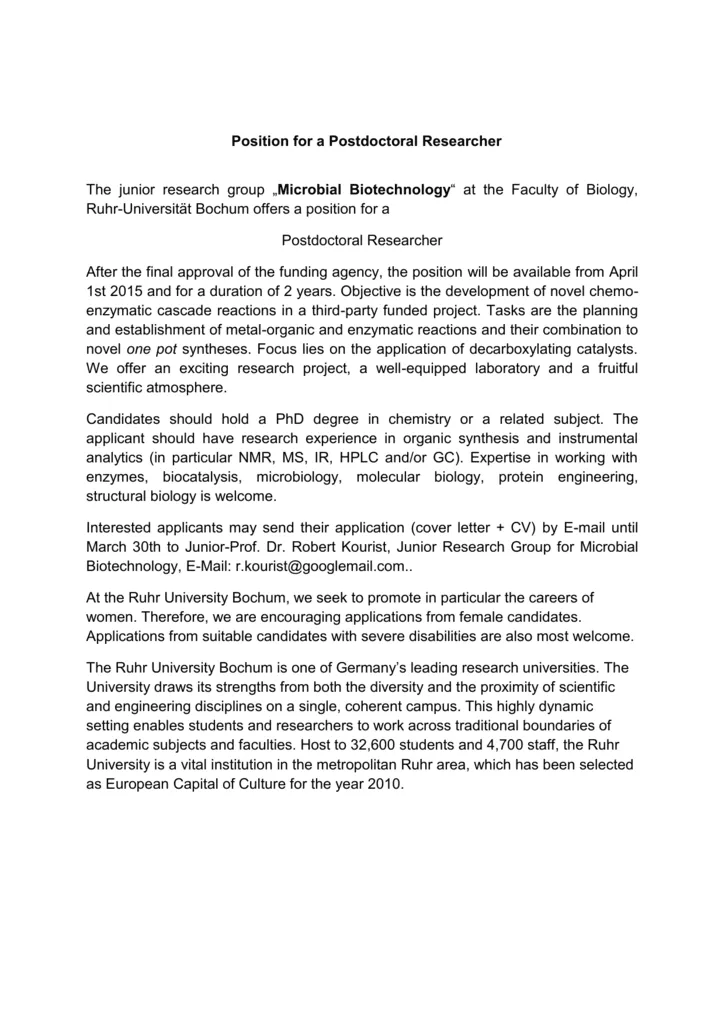
The body of your cover letter should prominently feature your research experience. Briefly describe your previous research projects, emphasizing your role, the techniques you used, and the results you achieved. Focus on the experiences that are most relevant to the postdoctoral position you are applying for. Quantify your accomplishments whenever possible by including metrics like the number of publications, presentations, or grants. Use action verbs to describe your work and highlight your contributions. For example, instead of saying “I worked on X project,” say “I led the X project, resulting in Y publications.” This section is crucial for demonstrating your expertise and showcasing your readiness for independent research. Tailor this section to match the skills and experiences the position is seeking. Remember, the goal is to paint a picture of your abilities and potential.
Showcasing Your Skills and Accomplishments
In addition to your research experience, explicitly state the skills and accomplishments that make you a strong candidate. Include both hard skills (technical abilities like specific software or lab techniques) and soft skills (communication, teamwork, problem-solving). Provide concrete examples of how you have utilized these skills in past projects. Highlight your accomplishments by mentioning publications, presentations, awards, or any other recognition you have received. Quantify your achievements whenever possible. For example, you might state, “Managed a team of three researchers, resulting in the successful publication of three high-impact papers.” This section is your opportunity to demonstrate your capabilities and prove your value. Be specific, provide evidence, and show how your skills and accomplishments align with the needs of the position.
Matching Your Skills with the Position
Carefully review the job description and identify the required and preferred skills and qualifications. Then, in your cover letter, clearly demonstrate how your skills and experiences align with these requirements. Use the language of the job description and provide specific examples to support your claims. This shows that you have carefully read the job posting and understand what the employer is looking for. For instance, if the job description mentions experience with a specific technique, highlight your proficiency with that technique and give an example of how you used it in your previous research. This targeted approach demonstrates your suitability for the position and increases your chances of being selected for an interview. Tailoring your cover letter in this manner is a crucial aspect of demonstrating your interest and qualifications.
Expressing Your Interest and Motivation
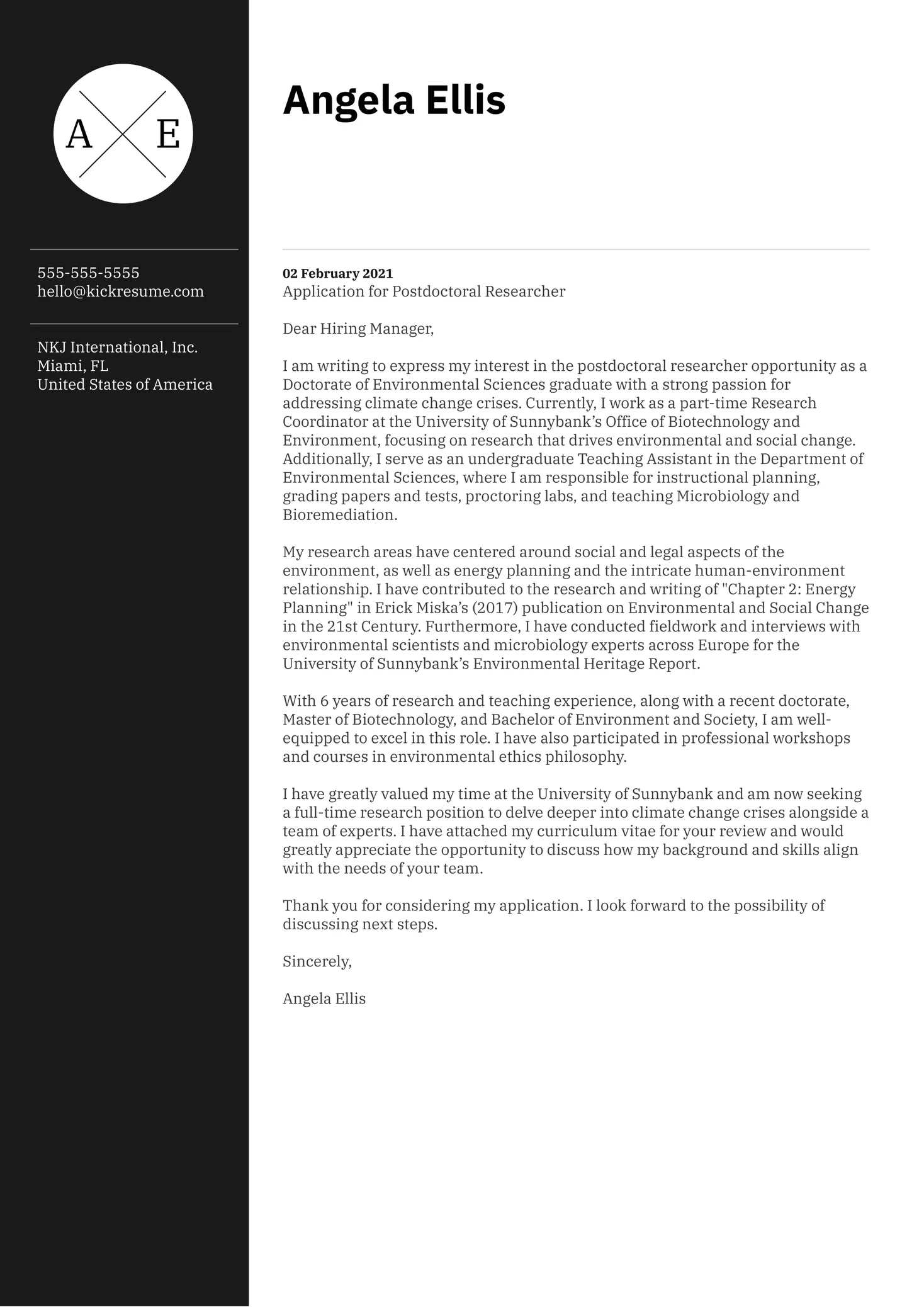
Clearly state your interest in the position and the research group. Explain why you are excited about the opportunity and what motivates you to apply. Discuss your understanding of the research area and how the lab’s work aligns with your research interests and career goals. Show that you have researched the lab and the PI’s work. Mention specific publications, projects, or areas of research that resonate with you. Your enthusiasm and genuine interest will make a positive impression and demonstrate that you are not just looking for any job, but specifically this one. This is your opportunity to express your passion and enthusiasm for the research, which is a critical aspect of making a strong case for your candidacy. Your motivation should be evident throughout the letter.
Tailoring Your Letter to the Specific Position
A generic cover letter is unlikely to impress. Customize your letter to each specific position you apply for. This involves tailoring your skills, experiences, and interests to align with the requirements of the job description and the research focus of the lab. Mention specific projects, techniques, or publications that are relevant to the position. Show that you understand the research area and are genuinely interested in the work being done. Personalization demonstrates your attention to detail and your commitment to the opportunity. Avoid using a template without making significant changes. Invest time in tailoring each cover letter to each position; the extra effort can greatly increase your chances of success.
Researching the Lab and the Principal Investigator
Before writing your cover letter, thoroughly research the lab and the PI. Read their recent publications, understand their current research projects, and familiarize yourself with their research philosophy. This will help you tailor your cover letter to their specific interests and demonstrate your genuine interest in joining their team. Mention specific publications or research areas that align with your interests and skills. This shows that you have taken the time to understand the lab’s work and are not just sending a generic application. Understanding the lab’s work allows you to express your enthusiasm and demonstrate how your skills and experience can contribute to their research. This effort signals to the PI that you are serious about the position and are a well-informed candidate. This research is crucial for demonstrating your initiative.
Structuring Your Cover Letter for Maximum Impact

A well-structured cover letter is easy to read and allows the reader to quickly grasp the key points. Use a clear and concise format with appropriate headings and paragraphs. Keep paragraphs relatively short and to the point. Use bullet points to highlight key skills, accomplishments, or research findings. Ensure the formatting is consistent and professional. Divide your letter into logical sections, such as an introduction, body paragraphs highlighting your skills and experience, and a conclusion. This structure will guide the reader through your qualifications and make it easier for them to assess your suitability for the position. Proper structure also shows your organizational abilities. A well-structured cover letter is more likely to be read thoroughly and remembered by the hiring committee.
Crafting a Compelling Introduction
Your introduction is your first opportunity to make a strong impression. Start with a concise and engaging statement that grabs the reader’s attention. State the position you are applying for and how you learned about it. Briefly mention your most relevant qualifications and express your enthusiasm for the opportunity. Your introduction should clearly state your purpose and set the tone for the rest of the letter. Avoid generic openings and instead, try to personalize your introduction by mentioning something specific that caught your eye about the research group or the position. A compelling introduction will entice the reader to continue reading and learn more about your qualifications. It sets the stage for the rest of your application and helps you to stand out.
Developing Strong Body Paragraphs
The body paragraphs of your cover letter are where you provide the details of your skills, experiences, and accomplishments. Each paragraph should focus on a specific aspect of your qualifications and provide concrete examples to support your claims. Use action verbs, quantify your achievements whenever possible, and align your skills and experiences with the requirements of the job description. Tailor your language to the specific position and demonstrate how your skills and experience make you the ideal candidate. Ensure each paragraph has a clear topic sentence, supporting evidence, and a concluding sentence that summarizes the main point. This structured approach will make your letter easy to read and help the hiring committee quickly understand your qualifications. Focus on the most relevant information and present it in a clear and compelling manner.
Writing a Powerful Conclusion
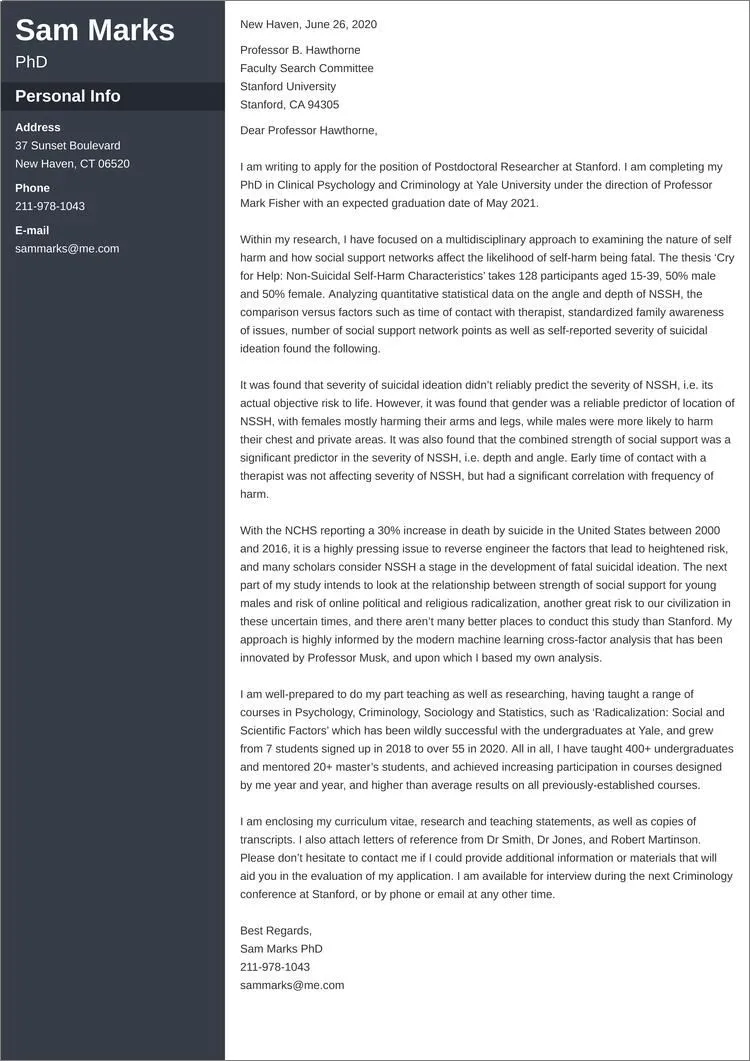
Your conclusion should summarize your key qualifications and reiterate your interest in the position. Thank the reader for their time and consideration, and express your enthusiasm for the opportunity. Reiterate your availability for an interview and provide your contact information again. Keep the conclusion brief and impactful. This is your last chance to leave a positive impression. Express your willingness to discuss your qualifications further and to provide any additional information. End with a professional closing, such as “Sincerely” or “Respectfully.” A well-crafted conclusion reinforces your key messages and leaves the reader with a positive impression of your suitability for the position. It demonstrates your professionalism and your commitment to the opportunity.
Formatting and Proofreading Your Cover Letter
Formatting and proofreading are crucial for presenting a professional image. A well-formatted cover letter is easy to read and reflects your attention to detail. Proofreading ensures that your letter is free of errors and enhances your credibility. Poor formatting and grammatical errors can undermine your qualifications and give the impression that you lack attention to detail. Take the time to carefully format your cover letter and to proofread it multiple times. Ensure that your formatting is consistent, with clear headings, appropriate spacing, and a professional font. Proper formatting, along with meticulous proofreading, significantly increases your chances of making a positive impression on the hiring committee. These details, while seemingly minor, can have a significant impact on the perception of your application.
Formatting Guidelines
Follow standard formatting guidelines to ensure your cover letter is easy to read. Use a professional font like Times New Roman, Arial, or Calibri, with a font size of 11 or 12 points. Use single-spacing within paragraphs and double-spacing between paragraphs. Set margins to one inch on all sides. Use clear headings and subheadings to organize the content and make it easy for the reader to scan. Make sure your contact information is easy to find and is consistently formatted. Adhering to these formatting guidelines ensures that your cover letter looks professional and is easy to read, helping the reader focus on your qualifications rather than being distracted by poor formatting. These guidelines provide structure and clarity, enhancing the overall presentation of your application.
Proofreading and Editing Tips
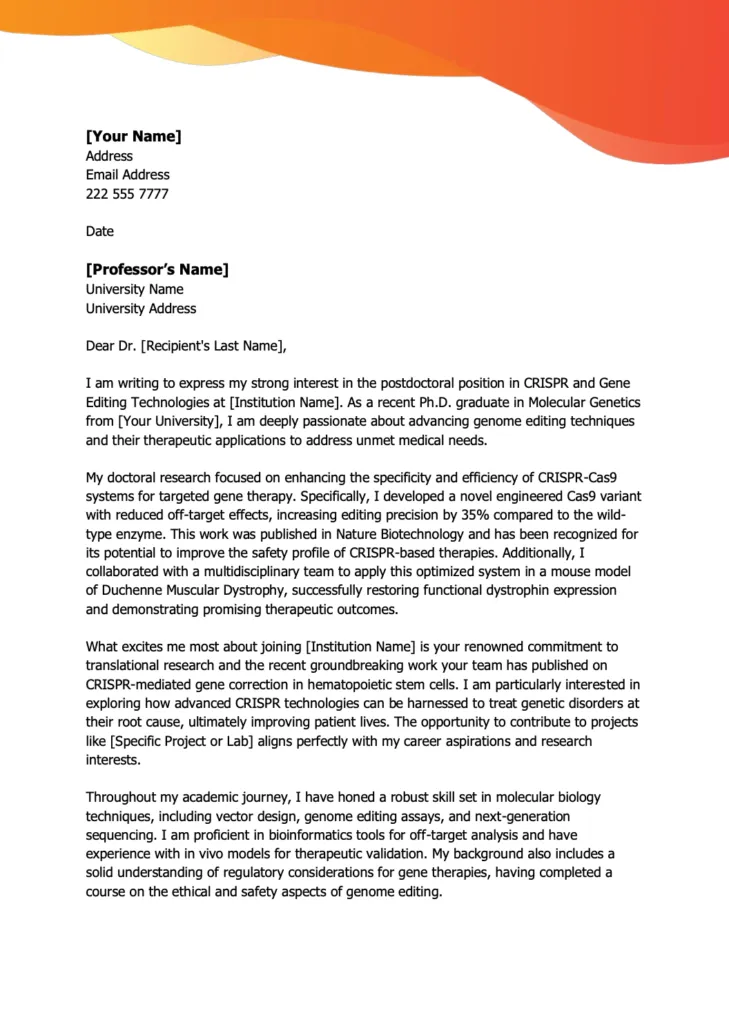
Proofreading is a critical step in the cover letter writing process. Read your cover letter multiple times, looking for any grammatical errors, typos, or inconsistencies. Use a spell checker and a grammar checker, but don’t rely solely on these tools; they can miss errors. Read your cover letter aloud to catch awkward phrasing and ensure the flow of the writing is smooth. Have a friend or colleague proofread your letter as well, as a fresh pair of eyes can often spot errors you might have missed. Make sure the formatting is consistent throughout the document. By carefully proofreading and editing your cover letter, you can ensure that it is error-free and presents you in the best possible light. A polished and well-proofread letter demonstrates your professionalism and attention to detail.
Common Mistakes to Avoid
Several common mistakes can undermine your cover letter and reduce your chances of getting an interview. Avoid generic language and lack of specificity. Don’t simply restate your CV; provide detailed examples of your skills and accomplishments. Avoid ignoring the job description and failing to tailor your letter to the specific requirements of the position. Make sure you address all the key qualifications and requirements. Poor formatting and typos can create a negative impression and suggest that you lack attention to detail. Always proofread your letter carefully before submitting it. Addressing these common mistakes will significantly increase the effectiveness of your cover letter and improve your chances of securing a postdoctoral position.
Generic Language and Lack of Specificity
Avoid using generic language and broad statements that don’t provide any specific information about your qualifications. Instead of saying “I am a good researcher,” provide specific examples of your research experience and accomplishments. Quantify your achievements whenever possible. For instance, state, “I have published five peer-reviewed papers in high-impact journals.” Similarly, avoid simply listing skills; instead, provide concrete examples of how you have utilized those skills. For example, instead of saying “I have experience with data analysis,” state, “I utilized Python and R to analyze complex datasets and developed a new statistical model.” Be specific and provide evidence to support your claims. This demonstrates your capabilities and proves your value, setting you apart from other applicants.
Ignoring the Job Description
One of the most common mistakes is failing to address the specific requirements outlined in the job description. The hiring committee will be looking for candidates who demonstrate that they meet the required skills, experience, and qualifications. Before writing your cover letter, carefully review the job description and identify the key requirements. Then, in your cover letter, explicitly address these requirements and provide evidence that you meet them. Use the language of the job description and provide specific examples to support your claims. Failing to do so will make it difficult for the hiring committee to see how you are a good fit for the position. Demonstrate that you have carefully read the job posting and understand what the employer is looking for. This targeted approach demonstrates your suitability and increases your chances of being invited for an interview.
Poor Formatting and Typos
Poor formatting and typos can create a negative impression and suggest a lack of attention to detail. Carefully format your cover letter to ensure it is easy to read and visually appealing. Use a professional font, consistent margins, and clear headings and subheadings. Proofread your letter multiple times, looking for any grammatical errors, typos, or inconsistencies. Reading your letter aloud can help you catch awkward phrasing and ensure the flow of the writing is smooth. A poorly formatted or error-filled cover letter will distract the reader from your qualifications and may lead to your application being rejected. Take the time to ensure that your cover letter is polished and professional. Your meticulous attention to detail reflects positively on your professionalism.
Finalizing and Submitting Your Cover Letter
Before submitting your cover letter, review it one last time to ensure that it is error-free and well-written. Make sure you have addressed all the key points and that the letter is tailored to the specific position. Double-check your contact information and the name of the PI (if known). Save your cover letter as a PDF file, as this will ensure that the formatting remains consistent across different devices. Always follow the instructions provided in the job posting for submitting your application. Submit your cover letter along with your CV and any other required documents before the deadline. By taking these final steps, you will increase your chances of making a positive impression and securing an interview for the postdoctoral position. A well-prepared submission signals professionalism and attentiveness.
